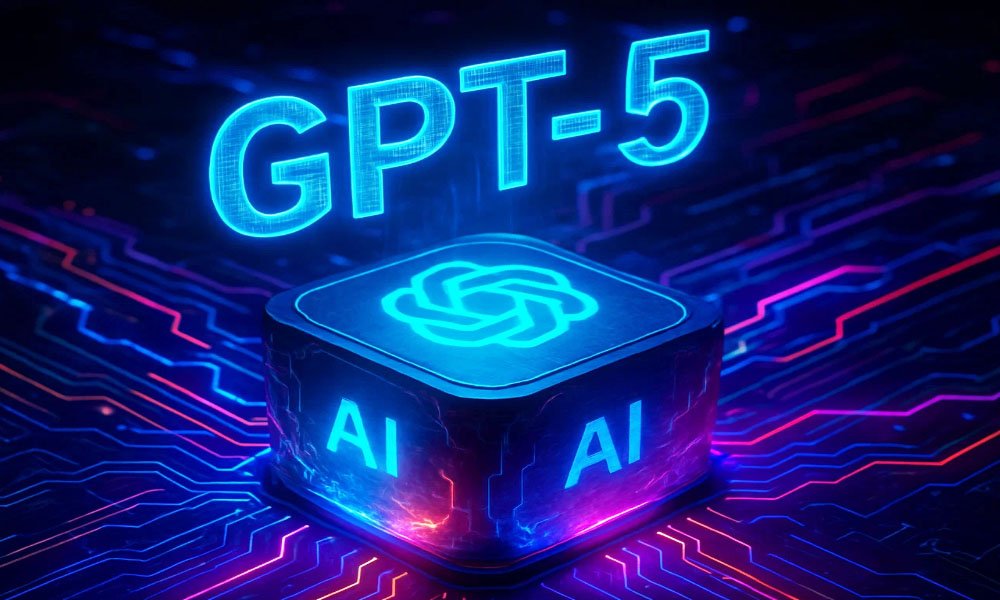It’s official: GPT-5 has been announced by OpenAI, and it’s not just another upgrade. Artificial intelligence and chatbot development are shifting into a new era-one where OpenAI combines every core tool into a unified experience. That means no more switching tabs between code interpreters, image generators, or browser tools. And yes, GPT-5 has memory, real-time reasoning, and multimodal capabilities built-in from the start.
What’s happening here is more than a model update. It’s a consolidation of the entire ChatGPT ecosystem-text, voice, vision, coding, and agent workflows-into a single conversational core.
GPT-5 isn’t just faster. It’s contextually persistent, visually aware, and agent-powered.
Here’s what that actually means for users, marketers, freelancers, and anyone using ChatBots to run a digital business.
GPT-5 Now Comes With Full Memory and Multimodal Understanding
OpenAI’s GPT-5 introduces persistent memory across sessions, meaning your chatbot finally remembers you without needing workarounds. It can recall preferences, past projects, company details, or even your writing tone from previous chats.
That alone makes it 10x more usable for real workflows.
What else is new:
| Feature | GPT-4 | GPT-5 |
| Context Memory | ❌ | ✅ |
| Real-Time Search | ⚠️ (via browser plugin) | ✅ Native |
| Multimodal (text + image + code + audio) | Partial | ✅ Full-stack |
| Native API Access | ⚠️ | ✅ Unified |
| Personal Agents | ❌ | ✅ Build-your-own |
With GPT-5, AI isn’t just answering questions-it’s executing entire workflows in a human-centric way.
Why OpenAI Is Merging All Tools Into One ChatBot
Until now, OpenAI had four major product silos:
- ChatGPT (text + logic)
- DALL·E (images)
- Whisper (voice)
- Code Interpreter (Python-based execution)
With GPT-5, these collapse into one seamless interface. No more asking ChatGPT for code, then switching to another tab to visualize it, then jumping to Whisper for voice interpretation.
Everything happens in chat. This means:
- You speak a product idea out loud.
- It gets transcribed, visualized, and specced in code.
- Then exported or deployed-right inside one window.
It’s not artificial intelligence anymore-it’s conversational automation.
Why Some Users Still Prefer Multi-AI Tools
Despite GPT-5’s power, many users still rely on more than one model for real output.
Why?
Because even with GPT-5’s upgrades, Claude 3 Opus is still more accurate for high-stakes analysis. Gemini remains better integrated with live data and YouTube. Perplexity AI dominates as a research companion. Grok is catching up in rapid-fire Q&A.
That’s why professionals-especially founders and operators-still prefer comparing outputs across multiple AIs.
Why I Still Test My Prompts in Chatronix First
Even with GPT-5 officially launched, I still rely on a unified multi-AI environment like Chatronix to compare output quality side-by-side.
Chatronix doesn’t just house GPT-5. It includes:
- Claude
- Gemini
- Perplexity
- Grok
- DeepSeek
All in one workspace-with turbo mode and zero tab switching.
When GPT-5 released, I tested the same brief across 5 models in Chatronix. The result? Claude still won at technical writing, Gemini nailed current data, GPT-5 was best for long-form tone. That context is impossible to see inside one model alone.
If you’re running real workflows-not just experiments-you need a place where all your AI tools live together. Chatronix became my core dashboard the same way Notion replaced scattered Google Docs.
What GPT-5 Means for Marketers, Coders, Freelancers
This isn’t a tech upgrade. GPT-5 is the start of OpenAI’s pivot toward end-to-end agentic workflows.
- Marketers now write a CTA and get the full funnel-landing page, emails, analytics script-in one pass.
- Freelancers can brief a client project and auto-generate the proposal, design system, and scope of work.
- Developers can sketch an idea, build the prototype, and write test cases-without opening VS Code.
And with memory, GPT-5 gets better the more you use it. That means your assistant isn’t just smart-it’s trained on you.
GPT-5 Also Changes How We Build Agents
The hidden story is how GPT-5 upgrades OpenAI’s Custom GPTs.
Instead of building scratch agents with LangChain or AutoGen, users can now:
- Upload personal data or documentation
- Assign goals and behaviors
- Let GPT-5 learn your tone, format, and processes
- Deploy that agent into Slack, Notion, or your site
Example: I trained a GPT-5 agent to respond to client questions, write dev summaries, and manage status updates. Within 3 hours, I had a deployable assistant that replaced three Google Sheets and 20 DMs a week.
And yes, I benchmarked the flow across models in Chatronix before launching.
Bonus Prompt: GPT-5 Kickstart for Workflow Agents
Here’s a real prompt I used to set up my assistant:
You’re a project operations agent trained on my documentation. Your job is to:
– Summarize client briefs
– Translate them into Notion tasks
– Flag unclear requirements
– Ask for clarification if needed
Reference tone: friendly, professional, proactive. Don’t assume. Double-check context before executing.
GPT-5 built the agent, mapped the tone, and started executing. I exported it into Slack and it’s now running part of my ops stack-no code.
<blockquote class=”twitter-tweet”><p lang=”en” dir=”ltr”>ChatGPT – Cheat Sheet <a href=”https://t.co/jjojwstZ78″>pic.twitter.com/jjojwstZ78</a></p>— Book Therapy (@Book_therapy223) <a href=”https://twitter.com/Book_therapy223/status/1943568439022424162?ref_src=twsrc%5Etfw”>July 11, 2025</a></blockquote> <script async src=”https://platform.twitter.com/widgets.js” charset=”utf-8″></script>
Final Thoughts: GPT-5 Is the Start, Not the Finish
Yes, GPT-5 is powerful.
But power without context is risky. That’s why Chatronix is still the smarter interface-because it doesn’t force you to guess which AI is best. It shows you side-by-side, so you decide.
Want to try GPT-5 alongside Claude, Gemini and more? Test them now at Chatronix.ai


